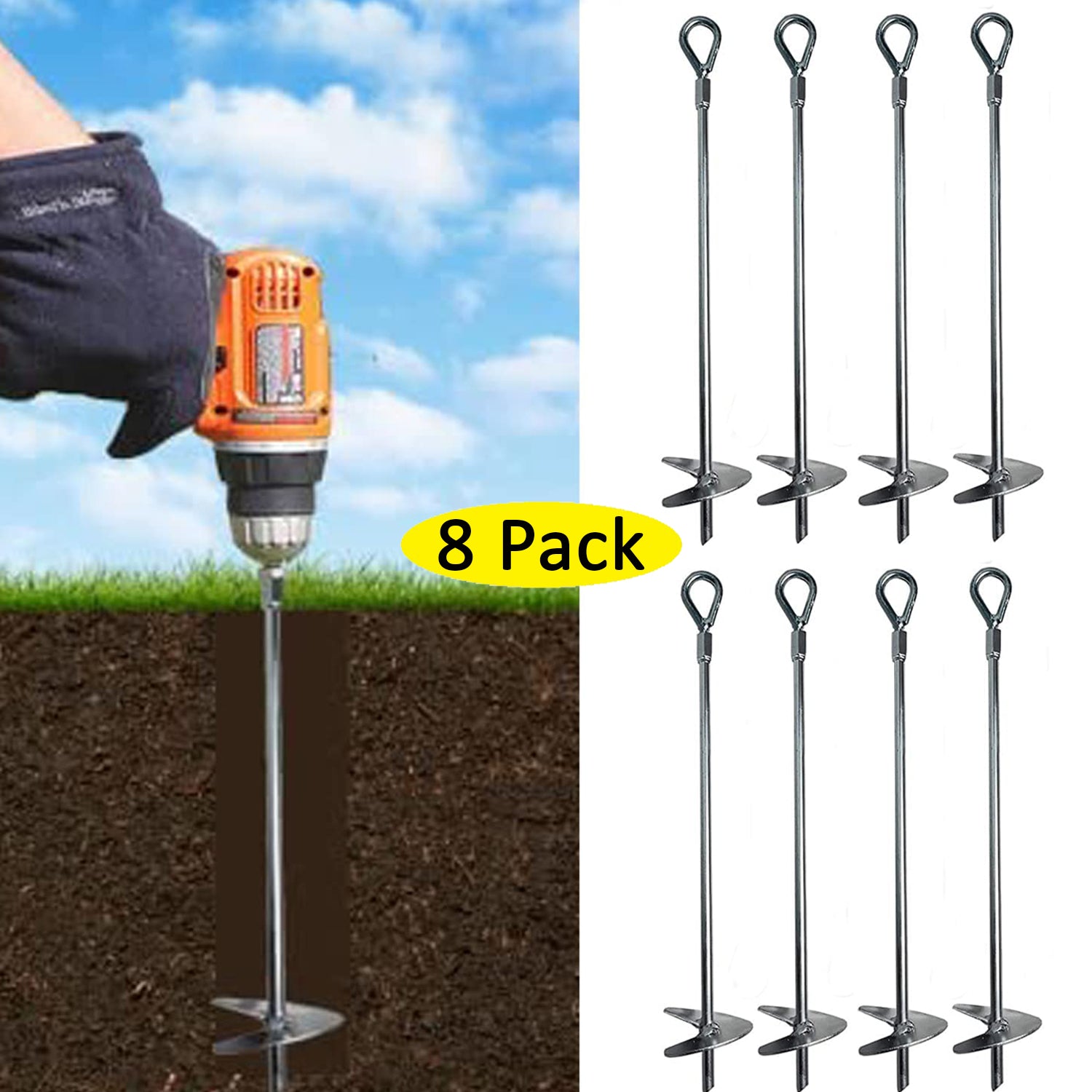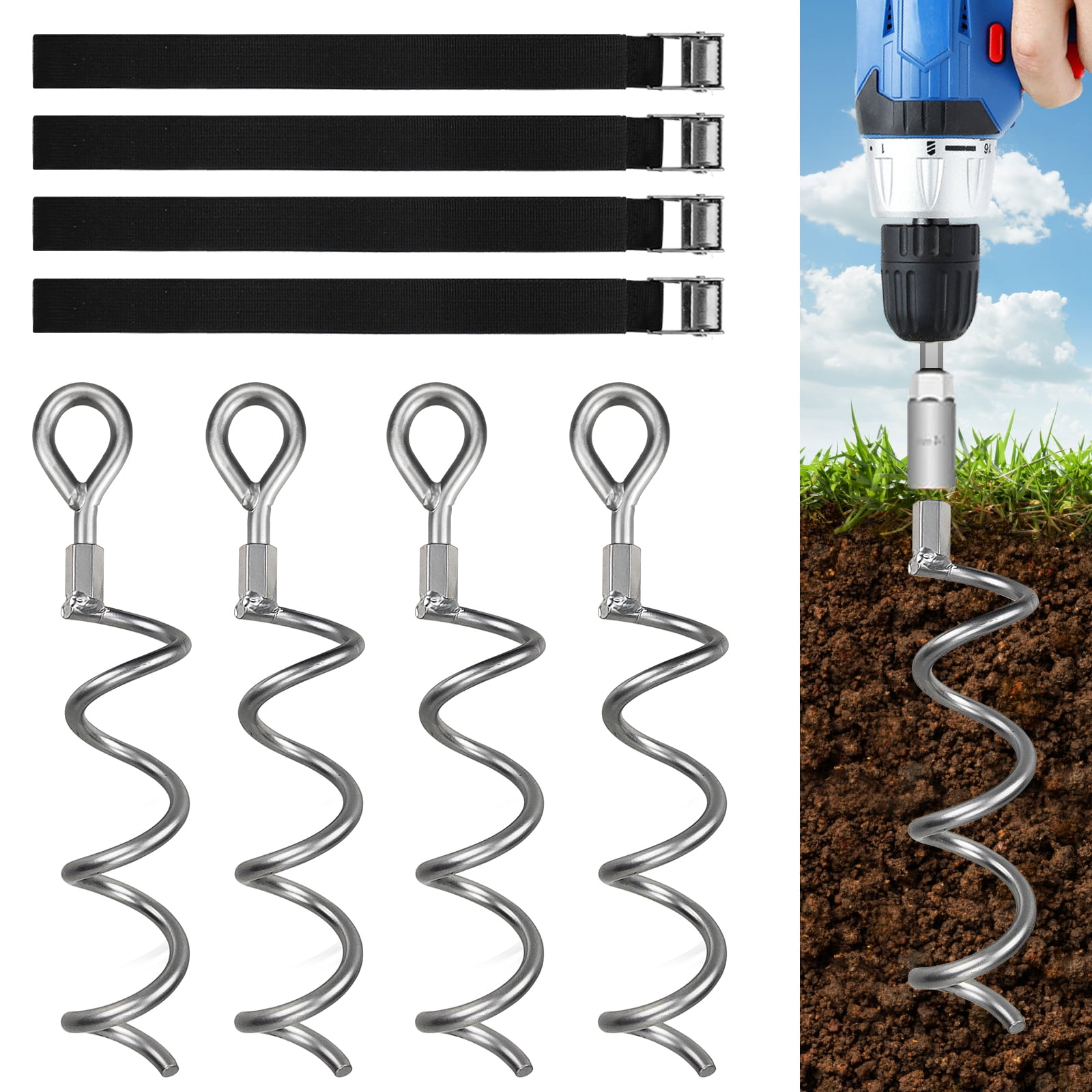Common Mistakes When Installing a Ground Anchor for Your Property
Common Mistakes When Installing a Ground Anchor for Your Property
Blog Article
Discover the Various Sorts Of Ground Support for Your Following Project
From auger supports, which excel in varied soil problems, to stake supports created for momentary installments, the alternatives are various. In addition, concrete and screw supports present unique advantages in particular circumstances, while deadman supports are customized for applications calling for resistance to lateral forces.

Auger Anchors
Auger supports are a popular choice in various building and construction and landscape design projects because of their unique layout and effective securing capacities. These supports are composed of a helical screw-like shaft that is driven right into the ground, permitting for a safe and secure and secure hold. The spiral style helps with simple setup and maximizes resistance against side pressures, making auger anchors particularly efficient in applications such as fencing, momentary structures, and erosion control.
The installment procedure of auger anchors is reasonably straightforward. They can be by hand or mechanically mounted, depending upon the dimension and called for depth. This flexibility allows for their usage in varied dirt conditions, from sandy to clayey terrains. Moreover, auger anchors can be conveniently removed and recycled, which includes in their cost-effectiveness and sustainability.
One of the considerable benefits of auger anchors is their ability to distribute lots uniformly across the bordering soil, reducing the risk of dirt disturbance and minimizing ecological impact. In addition, they are less at risk to loosening up or heaving gradually compared to traditional securing methods. Auger anchors are a superb option for tasks requiring sturdy and reputable anchoring solutions.

Risk Anchors
When it involves securing frameworks in a range of outside applications, risk supports offer a trusted and simple remedy. These anchors are generally created from durable products such as steel or aluminum, made to endure environmental stress and anxieties while giving optimum security. Their basic layout enables quick installation, making them an optimal option for permanent or short-term anchoring needs.
Risk anchors are specifically useful in safeguarding tents, covers, and various other lightweight structures against wind and climate. They function by being driven into the ground at an angle, producing a strong hold that stands up to pull-out forces - Ground Anchor. The performance of stake anchors depends on a number of elements, including soil type, wetness material, and the angle of installment
For added security, lots of risk supports include accessory points for ropes or bands, enabling stress changes as needed. In applications such as landscape design or building and construction, they can efficiently support devices or frameworks on uneven surface. On the whole, risk supports provide a functional and cost-effective option for protecting different outdoor installments, making them a recommended choice for contractors and DIY fanatics alike.
Concrete Anchors
Concrete anchors offer a robust option for safeguarding frameworks to concrete surfaces, making sure security and security in numerous applications. These supports are important for projects varying from residential buildings to massive commercial installations. They come like it in various kinds, including development supports, glue anchors, and undercut anchors, each created for particular load demands and ecological problems.
Expansion anchors count on mechanical devices to grip the concrete when mounted. They are ideal for medium to sturdy applications. Adhesive supports utilize high-strength epoxy or resin to bond the support to the concrete, supplying remarkable load-bearing abilities, particularly in broken concrete circumstances. Undercut supports create a special form within the concrete, providing extraordinary holding power, specifically in applications where tensile loads prevail.
When carried out correctly, concrete supports substantially boost the structural stability of various tasks, making them essential in modern-day construction practices. Recognizing the particular demands of your job will assist in picking the right kind of concrete anchor for the job.
Screw Anchors

Screw supports are a functional attaching solution that can be effectively used in a selection of applications where conventional concrete supports may not be sufficient. These supports are composed of a helical design that enables them to be easily driven right into the ground, making them optimal for usage in soil and various other substratums. Their special structure offers excellent holding power and resistance to pull-out pressures, making them appropriate for various projects, from landscape design to architectural assistance.
One of the key advantages of screw anchors is their ease of setup. They require very little tools and can frequently be mounted without the need for excavation, which saves both time and labor expenses. Furthermore, screw anchors can be removed and recycled, using a sustainable service for temporary applications.
Screw anchors are especially useful in areas where soil conditions are challenging, such as loose or sandy dirts. Their capacity to be mounted at differing depths enables for customization based upon particular project demands. On the whole, screw supports offer a reliable and dependable anchoring method, making them an exceptional option for designers and professionals seeking efficient services for their projects.
Deadman Anchors
Deadman supports offer as a robust solution for maintaining frameworks in challenging problems, particularly where standard securing methods may fall brief. These supports contain large, hefty objects hidden underground, which create resistance versus side forces. The style usually includes a straight component, such as a block of concrete or a metal plate, hidden in the dirt, to which straps or cable televisions are affixed.
The efficiency of deadman supports depends on their capacity to distribute tons over a bigger area, decreasing the risk of failure in unsteady dirt problems. They are particularly useful in applications such as retaining walls, temporary frameworks, and incline stabilization, where soil movement can endanger the honesty of the structure.
Setup of deadman supports calls for careful preparation to ensure they are positioned at the appropriate deepness and alignment, optimizing their load-bearing capacity. While they might call for more labor and material than light-weight supports, their integrity in adverse conditions makes them important for long-lasting tasks. In addition, deadman anchors are versatile and can be adjusted to various applications, making them a go-to choice for engineers facing distinct challenges in their jobs.
Conclusion
Auger supports succeed in varied dirt conditions, useful link while risk anchors suit temporary applications. For concrete surface areas, growth and glue anchors offer reputable options, and screw supports use versatility in tough terrains.
In addition, concrete and screw anchors present special advantages in details circumstances, while deadman anchors are tailored for applications needing resistance to side pressures - Ground Anchor.Auger anchors are a find out here now preferred selection in various building and construction and landscape design projects due to their unique layout and effective securing capabilities. They come in different types, consisting of expansion supports, sticky supports, and undercut anchors, each made for particular load demands and environmental problems
Adhesive supports use high-strength epoxy or resin to bond the anchor to the concrete, using exceptional load-bearing abilities, particularly in broken concrete scenarios. In general, screw anchors supply a reliable and trusted anchoring approach, making them an exceptional choice for engineers and service providers seeking reliable services for their tasks.
Report this page